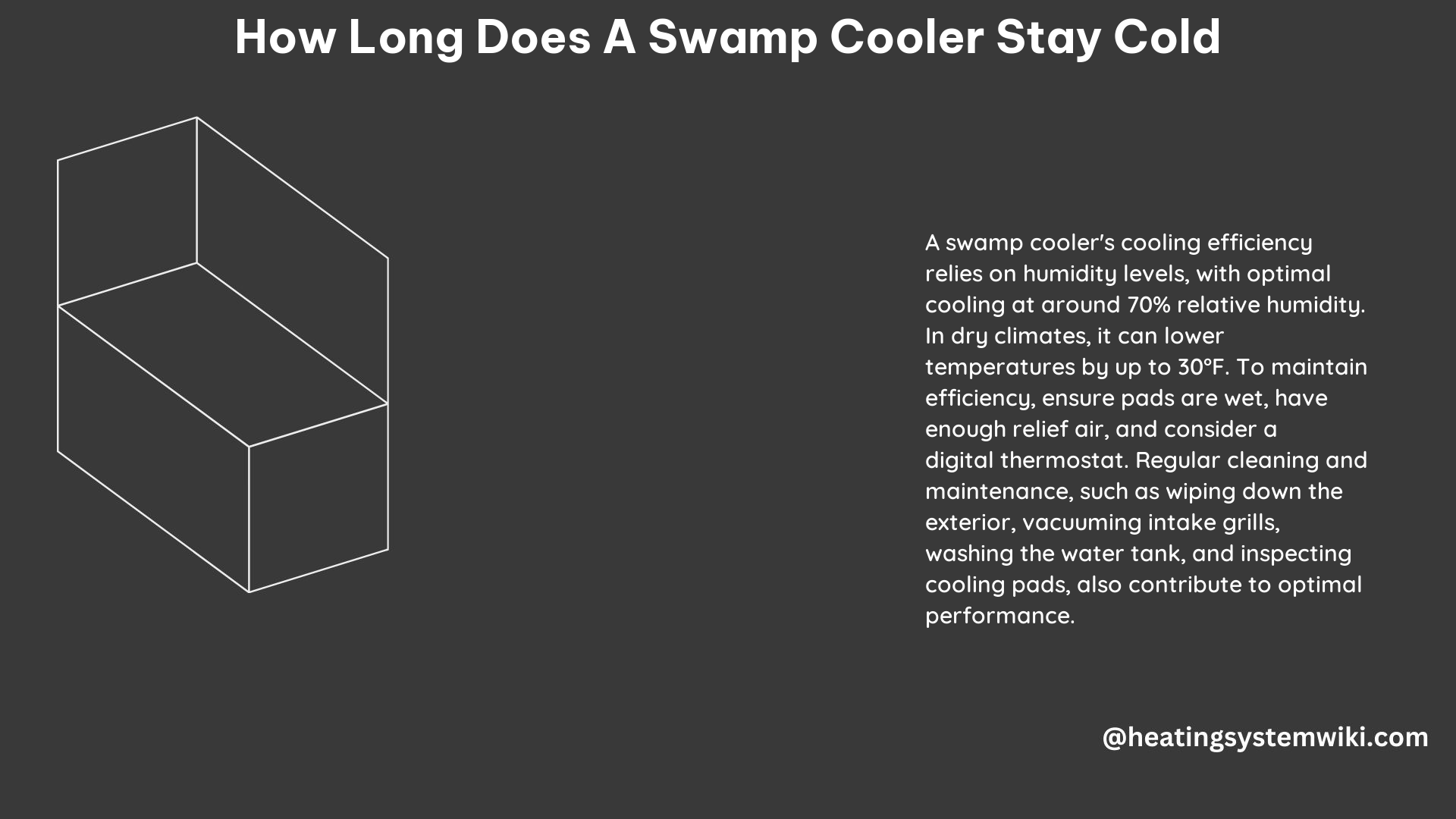Swamp coolers, also known as evaporative coolers, are a popular and energy-efficient way to beat the heat during the hot summer months. These units work by using the natural process of evaporation to lower the temperature of the air, providing a refreshing and comfortable indoor environment. However, the question of how long a swamp cooler can maintain its cooling effect is a common concern for many homeowners. In this comprehensive guide, we’ll dive deep into the factors that influence the cooling duration of a swamp cooler and provide you with the technical details to help you get the most out of your cooling system.
Understanding the Cooling Process
The cooling process of a swamp cooler is based on the principle of evaporative cooling. As warm, dry air passes over the water-saturated cooling pads, the water evaporates, absorbing heat from the air and lowering its temperature. This process can reduce the air temperature by up to 30°F, depending on the local climate and humidity levels.
The efficiency of a swamp cooler is directly related to the ambient air conditions. In areas with low humidity, the evaporation process is more effective, allowing the cooler to achieve its maximum cooling potential. Conversely, in regions with high humidity, the evaporation rate is reduced, and the cooling capacity of the swamp cooler is diminished.
Factors Affecting Cooling Duration

Several key factors determine how long a swamp cooler can maintain its cooling effect. Let’s explore these factors in detail:
1. Environmental Conditions
Climate and Humidity Levels: As mentioned earlier, the local climate and humidity levels play a crucial role in the cooling performance of a swamp cooler. In arid regions with low humidity, a swamp cooler can maintain its cooling effect for longer periods, often up to 8-10 hours or more. In contrast, in areas with high humidity, the cooling duration may be reduced to as little as 2-4 hours.
Ambient Temperature: The ambient temperature of the surrounding air also impacts the cooling duration. The hotter the outside temperature, the harder the swamp cooler has to work to maintain the desired indoor temperature. In extreme heat, the cooling effect may diminish more quickly.
Wind Conditions: Strong winds can disrupt the airflow and reduce the efficiency of the evaporative cooling process. This can lead to a shorter cooling duration, as the cooler air is quickly replaced by warmer, drier air.
2. Maintenance and Upkeep
Cleaning and Maintenance: Regular cleaning and maintenance of the swamp cooler’s components, such as the water pump, water lines, and cooling pads, are essential for optimal performance and extended cooling duration. Clogged or dirty components can impede the evaporation process, reducing the cooler’s efficiency.
Water Quality: The quality of the water used in the swamp cooler can also impact its cooling performance. Mineral-rich or hard water can lead to the buildup of scale and deposits, which can reduce the effectiveness of the cooling pads and shorten the cooling duration.
3. Usage Patterns
Runtime Duration: The length of time the swamp cooler is in operation can also affect its cooling duration. Continuous, 24/7 operation may result in a shorter overall cooling period compared to intermittent or on-demand usage.
Thermostat Settings: The thermostat settings on the swamp cooler can influence the cooling duration. Setting the thermostat to a lower temperature may result in the cooler running more frequently, potentially reducing the overall cooling duration.
Room Size and Airflow: The size of the space being cooled and the airflow within the room can also impact the cooling duration. Larger spaces or areas with poor airflow may require the swamp cooler to work harder, leading to a shorter cooling period.
Maximizing Cooling Duration
To maximize the cooling duration of your swamp cooler, consider the following strategies:
- Optimize Environmental Conditions: Choose a location for your swamp cooler that maximizes the evaporative cooling process, such as areas with low humidity and good airflow.
- Maintain the Unit Regularly: Regularly clean the cooling pads, water lines, and other components to ensure optimal performance and efficiency.
- Use High-Quality Water: Consider using filtered or softened water to minimize the buildup of mineral deposits and scale.
- Adjust Usage Patterns: Experiment with different runtime durations and thermostat settings to find the most efficient balance between cooling performance and energy consumption.
- Ensure Proper Airflow: Ensure that the swamp cooler is positioned in a way that allows for adequate airflow and circulation throughout the space.
By understanding the factors that influence the cooling duration of a swamp cooler and implementing these strategies, you can maximize the efficiency and longevity of your cooling system, ensuring a comfortable and energy-efficient indoor environment during the hot summer months.
